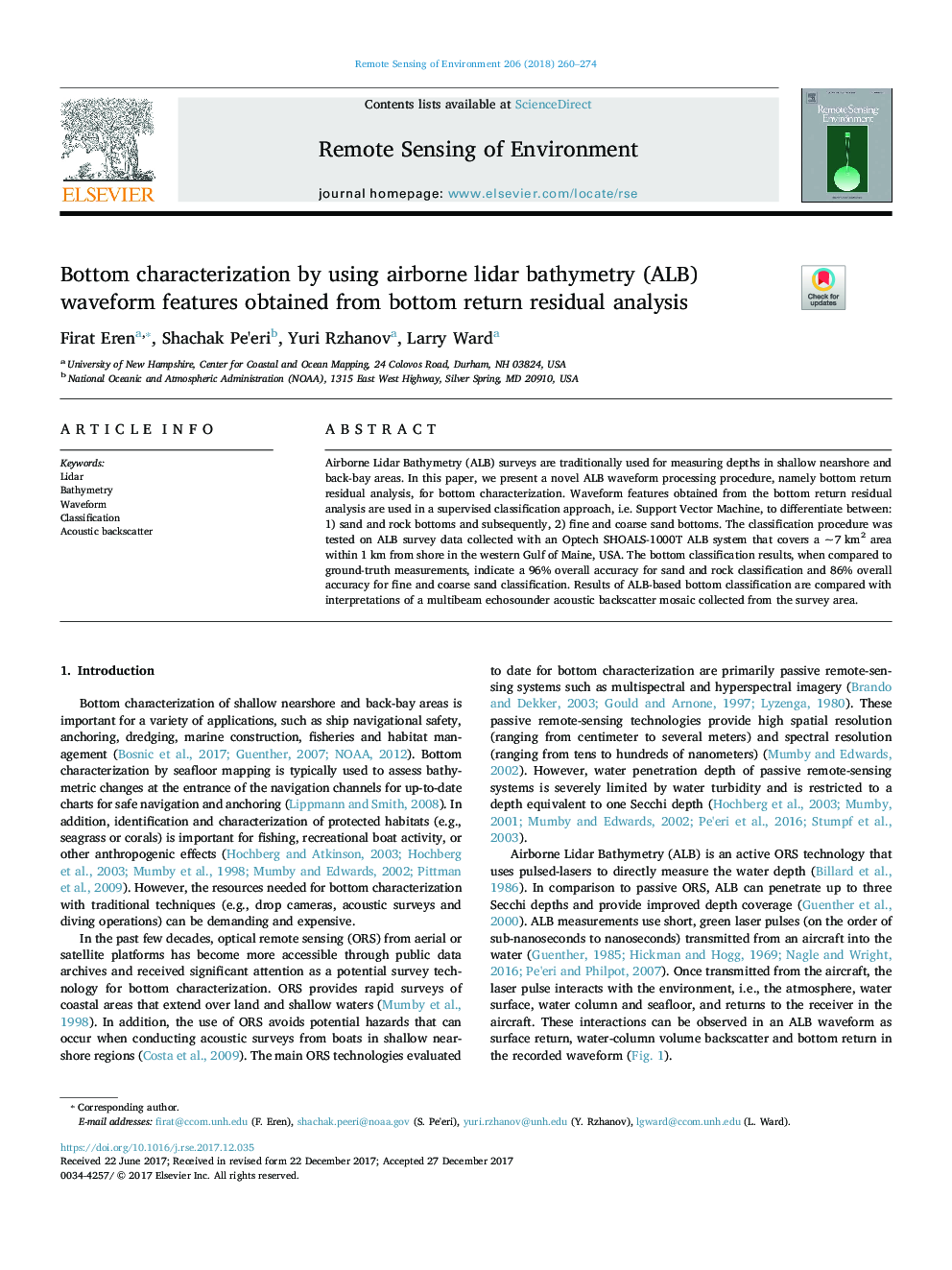| Article ID | Journal | Published Year | Pages | File Type |
|---|---|---|---|---|
| 8866744 | Remote Sensing of Environment | 2018 | 15 Pages |
Abstract
Airborne Lidar Bathymetry (ALB) surveys are traditionally used for measuring depths in shallow nearshore and back-bay areas. In this paper, we present a novel ALB waveform processing procedure, namely bottom return residual analysis, for bottom characterization. Waveform features obtained from the bottom return residual analysis are used in a supervised classification approach, i.e. Support Vector Machine, to differentiate between: 1) sand and rock bottoms and subsequently, 2) fine and coarse sand bottoms. The classification procedure was tested on ALB survey data collected with an Optech SHOALS-1000T ALB system that covers a ~Â 7Â km2 area within 1Â km from shore in the western Gulf of Maine, USA. The bottom classification results, when compared to ground-truth measurements, indicate a 96% overall accuracy for sand and rock classification and 86% overall accuracy for fine and coarse sand classification. Results of ALB-based bottom classification are compared with interpretations of a multibeam echosounder acoustic backscatter mosaic collected from the survey area.
Related Topics
Physical Sciences and Engineering
Earth and Planetary Sciences
Computers in Earth Sciences
Authors
Firat Eren, Shachak Pe'eri, Yuri Rzhanov, Larry Ward,
